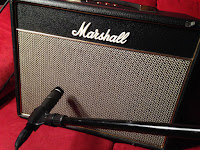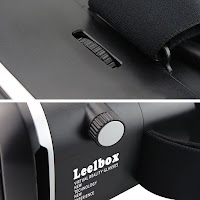One advantage of lavalier microphones is their portability. Though many expensive wireless solutions exist, there are also a lot of budget friendly systems available. It's not always necessary to record wirelessly. Instead, keep the recorder in a pocket and attach the microphone. If portability isn’t much of an issue, you can record with a computer or camera.
Camera and laptop microphones can pick up excessive background noise. This isn't usually an option for professional applications. These solutions are a great way to improve your production quality, while still using cheaper equipment.
Lavalier Microphones
Neewer Mini Lapel Microphone
The cheapest option available for lavalier microphones is the Neewer Mini Lapel MicrophoneThough their quality isn’t the best, the cheap price makes these microphones a good backup. They make a good addition to any recording kit in case other lavalier microphones break. Keep in mind to test your microphone before using it, because the cables can fail.
PowerDeWise Lavalier Microphone
If you’re planning on recording with a phone, the PowerDeWise Lavalier MicrophonePortable Recorders
 To achieve high quality professional recordings, a good solution is to use a dedicated portable recorder. Though portable recorders have a built in microphone, they also support lavalier microphones. A good example is the Zoom H1 Handy Portable Digital Recorder
To achieve high quality professional recordings, a good solution is to use a dedicated portable recorder. Though portable recorders have a built in microphone, they also support lavalier microphones. A good example is the Zoom H1 Handy Portable Digital RecorderPortable recorders capture audio on a microSD card. You can access the files on a computer for editing. The recorder comes with a 2 GB card, but it can be upgraded to a 32 GB card, such as the SanDisk Ultra 32GB
Cellphone Recording
If you’re not looking to buy a portable recorder, it’s also possible to use a cellphone. There are a few apps available, such as RØDE Rec (iOS) and Samsung Voice Recorder (Android). This is a cheap, portable solution, since most people have a phone accessible. Portable recorders provide better quality, but using a cellphone is best for most people.Computer Recording
If you’re using a lavalier microphone to make a YouTube video or podcast, you may have a computer nearby. If this is the case, plug the lavalier microphone into the computer. Then you don’t need to use an external recorder or a phone to capture the audio. We recommend using Audacity to capture all the audio, since it’s free and simple to use. To learn more about Audacity, check out the video here.Regardless of how you've recorded the sound, Audacity is a great editing program. Use compression to level out the volume if necessary. Depending on the microphone, you may want to use equalization to adjust the frequency balance. If there's a lot of background noise, use noise reduction to remove it. After all the editing is finished, export as a WAVE file.
Combining Your Audio and Video
It's easy to combine audio and video after recording. You can do this with just about any video editing software. Just make sure the timing is right, since there’s nothing worse than out of sync audio!Overall, lavalier microphones are simple way to record voice portably. They provide great sound quality for voice without picking up extra noise. When budgets are tight, we hope you like these solutions for capturing voice for a video.





















